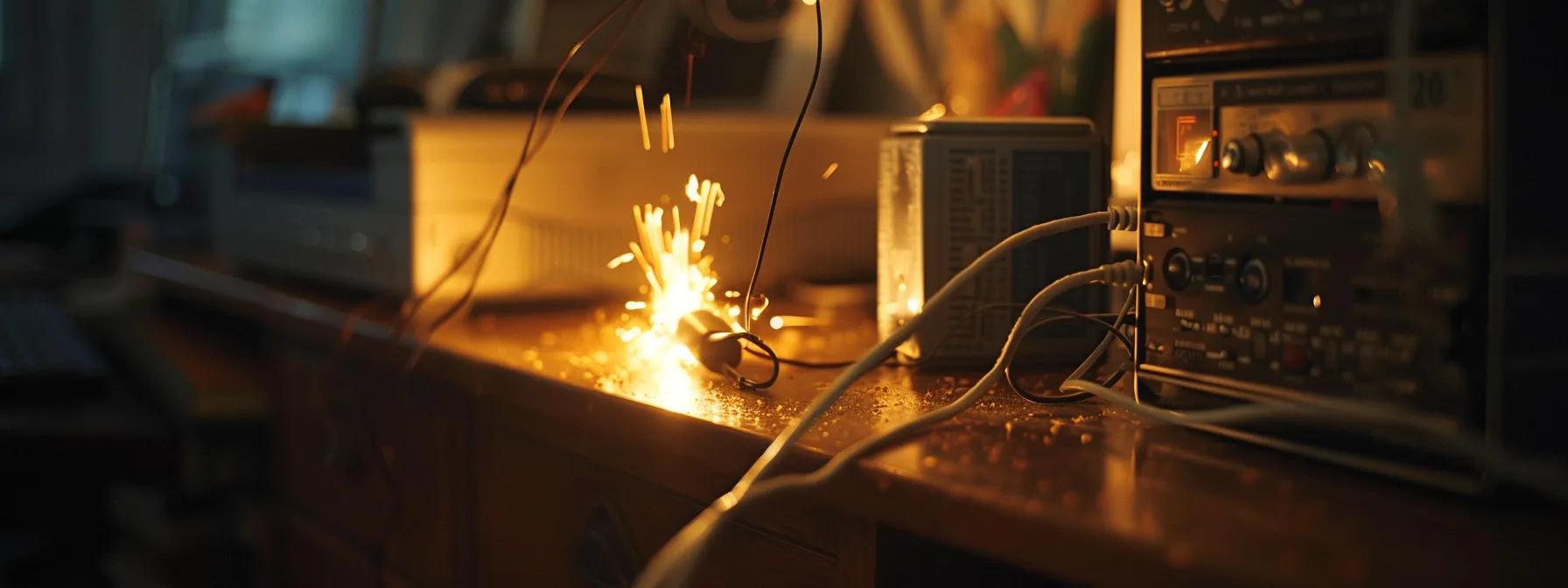Signs Your Lexington Home Requires an Electrical Panel Upgrade
Electrical panel issues can lead to recurring circuit breaker trips, flickering lights, and safety hazards. Homeowners may notice signs of overburdened or outdated electrical systems that risk overloads and fires. This article reviews symptoms such as frequent breaker tripping, obsolete panels, power surges, and the need for professional evaluations to keep your home safe, energy-efficient, and code-compliant.
Identify Frequent Circuit Breaker Tripping in Your Lexington Home
Frequent breaker tripping is a clear sign the system may be overwhelmed. Sudden power interruptions in specific areas suggest that power may not be distributed properly or that too many appliances are drawing from one circuit.
Understand the Signs of Circuit Breaker Malfunctions
Breakers that trip repeatedly can indicate overload or internal damage from corrosion, worn contacts, or loose wiring. Irregularities such as breakers that do not fully reset are early warnings. Regular inspections can catch these issues before they become severe.
Learn How Many Appliances Are on Each Circuit
Connecting too many devices to one circuit can overload the panel. For instance, a circuit for lighting should not simultaneously power heavy appliances. Documentation from an electrician or a DIY circuit map can reveal overload patterns and guide redistribution of loads.
Check the Age of Your Current Circuit Breakers
Older breakers might not meet modern safety standards. Many panels in older homes feature breakers that have been in place for decades, lacking modern safety features. Upgrading can provide better tolerance for current energy demands and reduce fire risk.
Investigate Flickering Lights and Power Loss
Flickering lights—especially when high-demand appliances are running—often signal compromised electrical distribution due to loose wiring or weak breakers. Consistent or sporadic issues warrant a professional review.
Assess the Frequency of Power Surges
Even brief power surges may damage sensitive electronics. While they might not always trip a breaker, repeated surges suggest the panel or other components might need repair or replacement. Using surge protection devices or consulting an electrician can help diagnose the problem.
Recognize Outdated Electrical Panels in Your Home

Outdated panels can fail to meet modern electrical codes and may not support today’s energy demands.
Review the Age of Your Electrical Panel
If your panel is more than 20–30 years old, it is likely outdated. Newer models offer advanced safety protocols, better materials, and increased connectivity, making them more capable of handling modern loads such as smart home devices.
Identify Common Indicators of an Outdated Panel
Physical signs—rust, scorch marks, and bulging breakers—indicate wear. Older panels typically offer fewer circuit options and may trip frequently. Such indicators suggest it may be time for a panel replacement by a licensed electrician.
Check for Visible Wear and Tear or Rust
Deterioration from rust and corrosion can weaken electrical connections and increase short-circuit and fire risks. If you observe any discoloration, warping, or other damage, a professional evaluation is critical.
Understand the Impact of Obsolete Technology
Many older panels lack modern safety features such as arc-fault circuit interrupters (AFCIs) and ground-fault circuit interrupters (GFCIs). Without these protections, the risk of electrical fires and shocks rises. An upgrade ensures compliance with current codes as set by the National Fire Protection Association and improves overall safety.
Evaluate Compatibility With Modern Appliances
Modern appliances and electronics require stable and robust power. Incompatibility can lead to inefficient energy distribution and frequent trips. Ensuring your panel meets current household demands protects your devices and maintains energy efficiency.
Analyze Your Lexington Home’s Power Needs
Understanding your home’s energy consumption helps determine if an upgrade is necessary.
Calculate Your Household’s Total Energy Consumption
Review monthly utility bills to identify high consumption periods. Include major appliances, HVAC systems, and specialty equipment. Using calculators or seeking advice from an electrician provides realistic estimates to help choose a panel that supports current and future needs.
Evaluate Current and Future Appliance Requirements
As homes adopt smart appliances, energy-efficient lighting, and enhanced entertainment systems, panels must deliver higher wattage reliably. Planning for future upgrades like electric vehicle charging or solar panel installations helps ensure your system remains adequate.
Consider Adding Smart Home Devices and Their Needs
Smart home technology often requires additional dedicated circuits. Modern panel upgrades can integrate automated lighting systems, thermostats, and security devices seamlessly while minimizing overload risk.
Review the Demands of Outdoor and Seasonal Equipment
Seasonal devices—such as space heaters, air conditioners, and holiday lighting—can place extra strain on your system. Evaluating these draws during peak seasons can indicate if your panel is adequate or if an upgrade is needed.
Check for Home Renovation Plans Needing More Power
Home modifications or expansions typically increase electrical demands. Incorporating renovation plans into your power needs assessment ensures the new panel will support additional circuits and avoid repetitive upgrades.
Look for Signs of Electrical Overloads

Electrical overloads can damage appliances and wiring.
Identify Unusual Heat From Outlets or Devices
Excess heat from outlets or devices is a strong indicator of overload. Overloaded circuits generate heat that can damage wiring insulation, potentially causing short circuits or fires.
List Appliances Causing Excessive Power Draw
High-power appliances like space heaters and industrial-grade kitchen equipment may cause overloads when used together. Tracking which devices consistently trip circuits can help balance the load more evenly.
Assess Signs of Discolored or Scorched Outlets
Discoloration or scorch marks around outlets signal that an overload has occurred, affecting insulation and wiring. This evidence necessitates immediate repair to minimize fire risks and further damage.
Understand the Risk of Tripping Fuses or Breakers
Frequent tripping indicates circuits that cannot handle the consistent power draw. Addressing these issues promptly prevents premature failure and ensures a more stable power supply.
Monitor for Frequent Resets of GFCI Outlets
GFCI outlets protect against shocks but frequent resets may indicate faulty wiring or overload. Logging these incidents can highlight problematic areas that need professional attention.
Evaluate Home Safety Concerns
A safe electrical system protects against shock, fire, and other hazards.
Check for Earthen Grounding Issues in Your System
Proper grounding safeguards against voltage spikes and faults. Ensuring grounding electrodes and wiring meet current codes is essential. Upgrading or rewiring may be required if issues are found.
Investigate if GFCI Outlets Are Functioning Properly
Regularly test GFCI outlets—particularly in kitchens and bathrooms—to verify they are operating correctly. Consistent failure or frequent resets indicate broader safety issues.
Understand the Importance of Surge Protection
Surge protectors shield devices from voltage spikes. An outdated panel that lacks surge protection leaves electronics vulnerable, so it may be wise to upgrade or add external surge suppressors.
Inspect for Signs of Shock or Electrical Hazards
Experiencing electrical shocks or noticing exposed wiring and tingling sensations are serious safety concerns. These signals require an immediate inspection by a licensed electrician.
Review Smoke Detectors and Their Connection to Power
Smoke detectors need to be properly connected to function during emergencies. False alarms or power interruption issues could indicate problems with the electrical panel requiring further attention.
Seek Professional Advice for Electrical Upgrades

Professional evaluations ensure all electrical issues are safely addressed.
Consult With a Licensed Electrician for Evaluations
Licensed electricians have the expertise to evaluate your system comprehensively. Their inspections can uncover hidden issues, such as internal corrosion or loose connections, and help determine necessary upgrades.
Inquire About the Costs Associated With Upgrades
Understanding the expense of upgrades—including parts, labor, and long-term savings from increased efficiency—is important. Discussing financing options or rebates for energy-efficient panels can help balance the investment with improved safety.
Request Recommendations for Electrical Panel Brands
Professionals can recommend durable and reliable brands that meet current codes and are compatible with modern home automation systems. Choosing nationally recognized products ensures both safety and long-term value.
Schedule Routine Inspections as Part of Home Care
Regular inspections catch potential issues early and help maintain system efficiency after renovations or significant power fluctuations. Proactive maintenance can reduce emergency repairs and extend component lifespans.
Understand the Benefits of Energy-Efficient Upgrades
Modern panels optimize energy use, reduce power loss, and can lower monthly utility bills. In addition to improved performance and safety, energy-efficient upgrades may increase property value and appeal to future buyers.
Final Thoughts
Upgrading an outdated electrical panel is crucial for maintaining a safe and efficient home in Lexington. Recognizing signs such as frequent breaker trips, overloaded circuits, and physical wear allows homeowners to act before larger problems arise. Professional evaluations and routine inspections ensure compliance with modern safety standards. Taking proactive steps today protects your home, enhances energy efficiency, and secures safety for years to come.
Frequently Asked Questions
Q: What causes frequent circuit breaker tripping in homes? A: Frequent tripping is usually due to circuit overloads, outdated breakers, or faulty wiring that requires professional evaluation.
Q: How do I know if my electrical panel is outdated? A: Panels over 20–30 years old that show rust, discoloration, or limited capacity are likely outdated and may need replacement.
Q: Can upgrading my electrical panel improve appliance performance? A: Yes, modern panels distribute power more efficiently, reducing load imbalances and improving appliance functionality.
Q: What are the safety risks of an overloaded electrical system? A: Risks include electrical fires, shock hazards, damage to electronics, and increased power surges that compromise system integrity.
Q: Why should I consult a licensed electrician for a panel upgrade? A: Licensed electricians ensure work meets code requirements, safely handle complex wiring, and provide recommendations on energy-efficient solutions.

